Oregon’s Most Endangered Places for 2019
Since 2011, Restore Oregon has delivered one of the most impactful preservation programs in the state: Oregon’s Most Endangered Places. Each year historic properties are at risk of being lost to demolition, neglect, hard times, poor public policy, or encroaching development. With support from The Kinsman Foundation, Oregon’s Most Endangered Places program works to raise public awareness of the cultural value of these places, provides direct consultation, distributes seed grants, advocates for pro-preservation public policy, and helps owners leverage additional grants and private investment to support their restoration.
Elks Lodge, 1915 - Medford
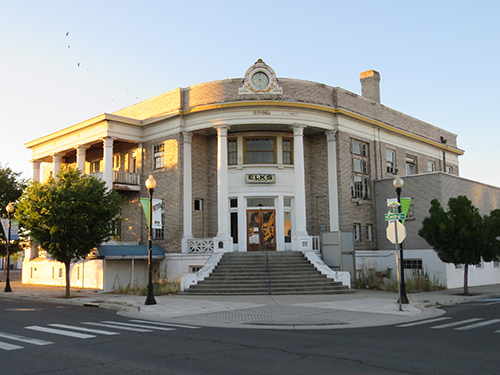
The Benevolent Order of Elks Lodge in Medford stands as a landmark to the spirit of patriotism, fraternity, and charity in the community.
Changing times and dwindling membership prompted the Elks to sell the property this past year, but the new owners must address years of deferred maintenance and figure out how to repurpose the building to generate income. The City of Medford hopes its restoration and reuse will add momentum to its downtown revival, but just how the building will be re-used remains to be figured out.
Your donations make it possible for Restore Oregon to help the new owners navigate the processes to secure essential Federal Tax Credits and formalize a preservation plan.
Upper Sandy Guard Station, 1935 – near Government Camp
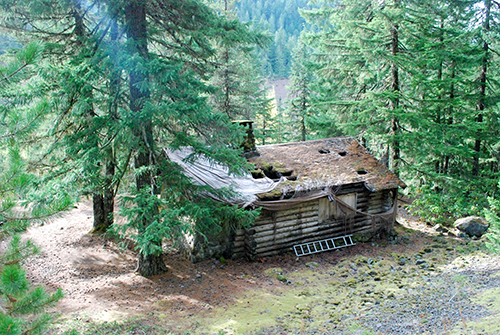
The Upper Sandy Guard Station represents many deteriorating historic structures stuck in limbo because they stand in a Wilderness Area where mechanized construction is prohibited.
The native stone and log cabin was erected along the Pacific Crest Trail as part of the 1930’s New Deal work relief program and is clearly in urgent need of repair.
Thanks to efforts by Restore Oregon and other advocacy groups, a recent court ruling has cleared the way for restoration work to take place on historic Wilderness Area structures. The cabin could be stabilized and restored as a hiking shelter.
Now we must press for the Forest Service to prioritize and fund the work. Your contributions allow us to keep the pressure on.
Vale Hotel, 1908 - Vale
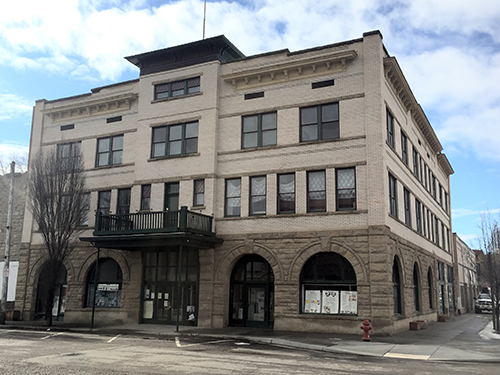
Saved from demolition in the 1990s by a band of local citizens, the Vale Hotel is one of the most prominent buildings in Malheur County, and literally sits along the authentic Oregon Trail.
Though currently without running water or electricity, the non-profit owners hope to revive the building, providing much-needed economic development for Vale’s Main Street.
By leveraging its Most Endangered status and a Restore Oregon seed grant made possible by your donations, the owners of the hotel are nearing their goal of funding a structural assessment and redevelopment study.
Butte Creek Mill, 1872 - Eagle Point
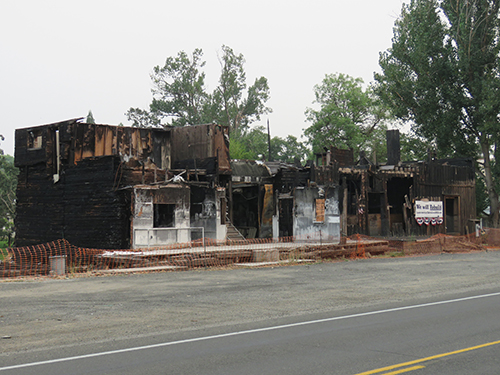
Hearts were broken when fire ravaged the Butte Creek Mill on Christmas morning, 2015. Listed in the National Register, it was the last water-powered, flour gristmill in commercial operation west of the Mississippi. The 4-foot diameter mill stones had been in use since the mill opened in 1872, turning out fine organic flours and baking mixes sold in the General Store inside.
Luckily the mill stones and key structural elements survived the blaze to retain the mill’s listing in the National Register. Parts were salvaged and protected, and literally the entire community has rallied around the rebuilding effort.
A plan to reconstruct is underway. Owner Bob Russell has transferred the mill to a non-profit organization, and a national band of timber framers has plans to come rebuild the structural framework next summer.
But raising the estimated 2-million dollars poses a daunting task, and what remains of the structure cannot withstand the elements for very long.
The Butte Creek Mill is both the economic heart and cultural soul of Eagle Point, help us make sure those old mill wheels turn again.
Heryford Building, 1913 – Lakeview
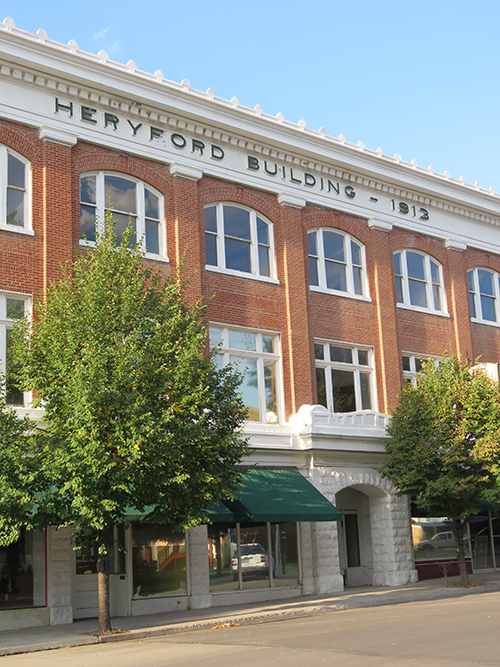
The Heryford Building is literally the cornerstone of Lakeview’s Main Street. Built by a Pioneer ranching family – and listed in the National Register of Historic Places – the Heryford was the first steel-framed building constructed in Oregon outside of Portland. Over the years it has housed a mercantile, Elks Lodge, drug store, offices, and ice cream parlor.
Geographically and economically isolated, the Heryford’s charming façade belies the urgen need for a new roof, code upgrades, and restoration to address extensive water damage and make it habitable.
The city of Lakeview and its Main Street organization see the Heryford as the centerpiece of a downtown renaissance. They envision it reactivated with new retail businesses, community space for Native American and early ranching exhibits, and office space.
OSU Experiment Station (The Red Barn), 1914 – Union
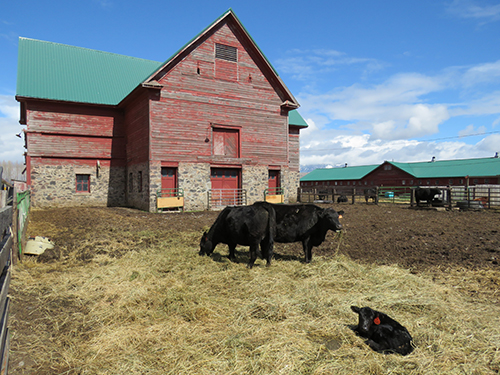
The “Red Barn” at Oregon State University’s Agricultural Research Center is an iconic structure harkening back to simpler times and the agricultural roots of our economy. But this Union County landmark has become structurally compromised and may be demolished unless a viable new use can justify investment in repairs.
Built in 1914, the Red Barn was constructed to withstand the harsh winds which dominate the eastern Oregon landscape. It still has its original plank-framed bearing trusses and heavy timber beams, along with a hand chipped fieldstone foundation.
It's been used for many purposes: feed storage, calves and lambs, dairy milking, seed cleaning, and livestock nutrition experiments.
Unfortunately, decay and weather have taken their toll. Budget cuts have left the university strapped for resources, and its design is not conducive to modern farming practices.
Ideally, there would be a complete renovation of the Red Barn, maintaining its historic exterior. One option is to adapt it as a research facility to advance Oregon’s agricultural economy.
There’s been tremendous effort to preserve Oregon’s farm land. But we’ve failed to invest in the preservation of Oregon’s farm heritage. Your contributions will help us change that.
Santiam Pass Ski Lodge, 1939 – Santiam Pass
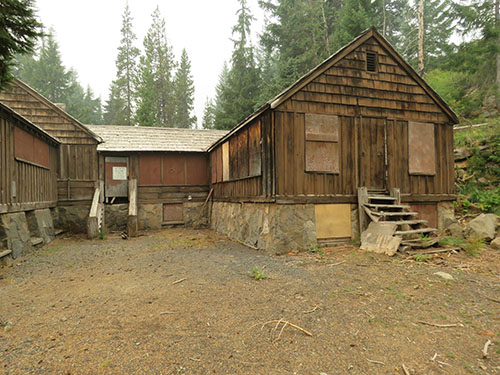
Santiam Lodge is a beautiful lodge constructed by the Civilian Conservation Corps in the High Cascades. It accommodated 60 guests within its three dormitories, and is excellent example of the rustic architectural style of the era.
The lodge included a ski shop, a main lodge with a large stone fireplace, a dining hall, kitchen, and caretaker’s quarters. Materials were all derived from local sources. The stone for the foundation, fireplace and chimney were quarried from Hogg Rock just to the west, and most of the lodge was built with timber milled from local trees.
After 46 years of operation, the lodge closed in 1986 and has been ravaged by deterioration and vandals. Recently the Forest Service has stabilized the structure and listed it in the National Register of Historic Places, but budget cuts have stymied further restoration.
There is hope, however. New operators are seeking a long-term lease to repair and re-open the lodge for tourism and events. Your support will make it possible for Restore Oregon to help them navigate the rehabilitation standards, code upgrades, and financial hurdles in front of them.
Astoria Ferry (Tourist No. 2), 1924 - Astoria
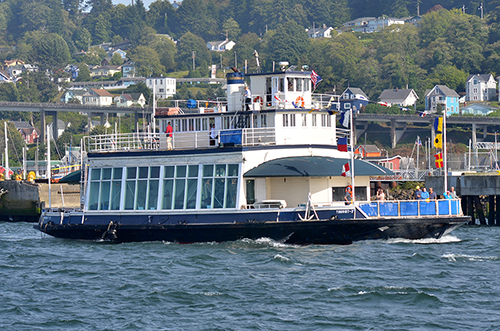
The Astoria Ferry known as Tourist Number 2 is the only surviving vessel from a fleet operated by Captain Fritz Elfving that crossed the Columbia River between Oregon and Washington from 1921 to 1966. In its heyday, it would carry 20 cars and 155 passengers, and was integral to daily life and commerce.
Following the bombing of Pearl Harbor in 1941, the government commandeered the ferry to lay mines at the mouth of the Columbia. Renamed the Octopus, she was awarded an E for Excellence as the fastest minelayer in the Navy.
When the Astoria-Megler Bridge was opened in 1966, the ferry was sold and moved to Puget Sound, where it was used in various capacities until 2014. When hotelier Robert Jacob realized this important piece of Astoria history was still intact, he organized a non-profit and raised $50,000 to bring it back to Astoria. Its restoration and reuse will support tourism on the Columbia and tell an important tale of maritime history.
Nearly 100 years after her construction, the ferry retains a high-level of integrity. Her wooden hull is solid, but the passenger deck leaks badly, the electrical system is shot, the engine is unsafe, and rot is proliferating. To complicate matters, its size is too big for Astoria drydocks.
Dozens of maritime workers have signed up to volunteer their skills to make the Astoria Ferry sea-worthy again. Together with your contributions, we look forward to the day when we’ll gather on the deck of Tourist Number 2 and raise a glass as she traverses the Astoria waterfront once again.
Jantzen Beach Carousel, 1921 – Portland
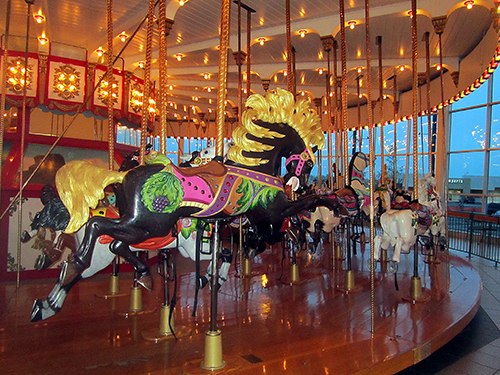
The Jantzen Beach Carousel embodies some of the happiest memories of generations of Oregonians and Vancouverites.
For five years, it languished on our list of Oregon’s Most Endangered Places, its whereabouts unknown. Rumors circulated it had been sold off. But recently we concluded a donation of the beloved icon to Restore Oregon and launched a campaign to “Re-TURN the Jantzen Beach Carousel.”
The Carousel is a real treasure. This 100-year-old piece of hand-carved art was made by the C.W. Parker Company for the 1904 World’s Fair in St. Louis. One of the largest ever built, it is the last of its type known to remain in the U.S.
Nearly 70 feet in diameter, its 72 horses delighted families at the Jantzen Beach Amusement Park from 1928 until it closed in1970. Then it moved into the Jantzen Beach shopping center until 2012. It has been in storage ever since.
Now Its time to Re-TURN the Carousel to the Portland Area! This priceless emblem of our cultural heritage also represents a significant opportunity for economic development, attracting thousands of visitors and tourists, and providing a much-needed family-friendly activity during rainy months.
A blue-ribbon committee of local leaders has been formed to identify a new site and long-term strategy that ensures its future. Former State Senator, Margaret Carter, and Oregon “Premier Citizen,” Gerry Frank, are honorary co-chairs.
Inspiration has been drawn from Janes Carousel in Brooklyn New York. Designed by architect Jean Nouvel, it has transformed that riverfront.
CUMBERLAND CHURCH, ALBANY (1892)
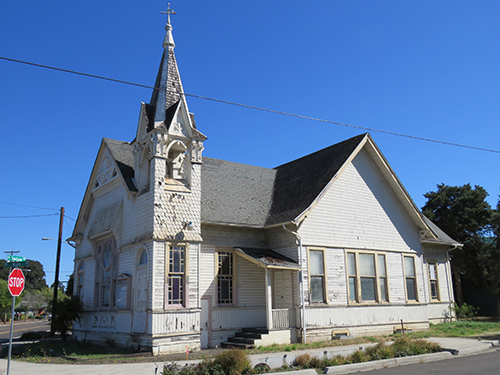
Constructed in 1892, the Cumberland Presbyterian Church, also known as the Main Street Church, has stood as a landmark anchoring east Albany for 126 years. It is Albany’s only Queen Anne church, and is eligible for the National Register of Historic Places. The building retains its unique historical integrity through architectural details such as original stained-glass windows, doors, and ornate trim work. The church is showing the signs of deferred maintenance and is under threat of demolition. Restore Oregon will assist the friends group, Save Our Cumberland Church, with a redevelopment plan. With a large, open floor plan, high ceilings, and 126 years of history, the Cumberland Church is ideally suited for adaptive reuse as a community center.
ROBERT AND CHARLES WILSON HOMES, WARM SPRINGS (1947)
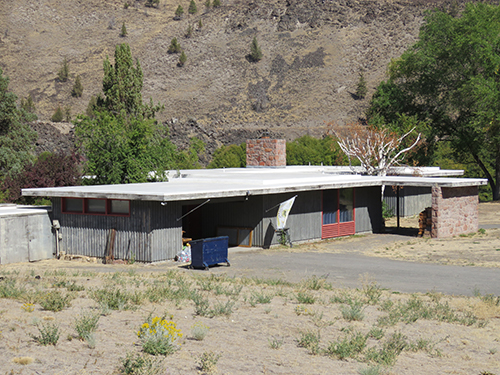
Designed by world-renowned architect, Pietro Belluschi, the Robert and Charles Wilson homes are outstanding examples of high style, mid-century modern architecture. For the Confederated Tribes of Warm Springs, however, they reflect a cultural struggle over land ownership and the timber industry. Both houses are in poor condition, but the larger house has badly deteriorated, sitting without a tenant for 23 years. Both homes retain original floor-plans and mill-work and the Tribes have made numerous efforts to preserve the property. Restore Oregon will work to assist them in conducting emergency stabilization and carrying out an adaptive reuse plan to promote future awareness of tribal culture and develop their tourism industry.
WALDRON BROTHERS DRUGSTORE, THE DALLES (1864)
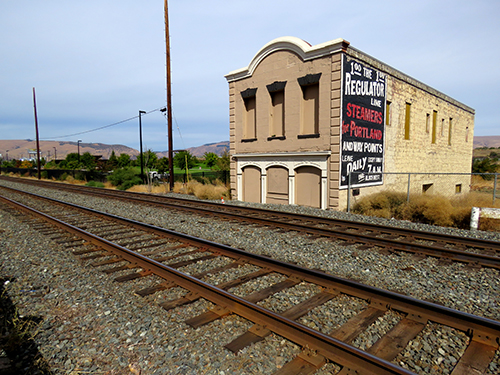
The Waldron Brothers’ Drugstore, also known as the Gitchell Building, is the oldest intact commercial building in The Dalles. Constructed during the Civil War of local stone, it has served many purposes in its 154 years: a Post Office and drugstore, town newspaper office and Masonic Lodge, ticket office, and later as apartments, offices, and even a haunted house. Repair work was done in 2009 to address areas of deterioration, but now the building is threatened with demolition. A group of concerned citizens has formed to work with The Dalles Main Street program, city officials, and local residents to develop a plan for the rehabilitation and reuse of the Drugstore. Restore Oregon staff will devote the resources needed to raise awareness of the value of this critically endangered landmark, work to prevent its demolition, and determine an economically sustainable reuse.

